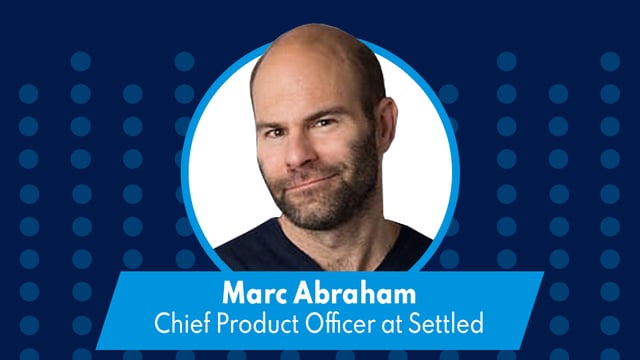Working with Engineers is Product Management

Marc Abraham, Chief Product Officer at Settled, shares how he collaborates with engineers and designers and his approach to product road mapping.
There are few standardized career paths for becoming a product manager, but Marc Abraham’s story is particularly unique. Marc is a former corporate lawyer turned Chief Product Officer based in the UK. After working in business development and project management, he transitioned to product management so that he could work on the entire product lifecycle.
Marc has gained a deep understanding of how to facilitate productive collaboration. He learned that in order to develop and maintain a healthy working relationship between product managers and engineers, product managers and engineers need to have mutual respect and understanding, and clear roles and responsibilities.
Product managers liaise between customers and the business, engineers and designers, to come up with the answer to “what we are trying to achieve and why?” Engineers are able to turn those ideas into viable products. In other words, product managers are responsible for the “what” and “why,” and engineers are responsible for the “how.”
Marc also shares advice on collaboration with designers. Everyone has an opinion on design, he says. That’s why he recommends that product managers facilitate conversations with key stakeholders by providing context and explaining the “why” behind decisions.
Marc says that good product managers value all the information and viewpoints, make a decision, and take accountability. However, while it’s crucial to make sure everyone has a say, it’s easy for this to lead to chaos. To this end, Marc says to set parameters so that people don’t go too far off on a tangent.
Marc shares two helpful frameworks for making product decisions: Cost of Delay and RICE.
Cost of Delay forces teams to consider what would happen if they stopped working on A and started working on B instead. In other words, teams consider the opportunity cost of a given project, calculating how much effort is need to bring the product to market but also what alternative uses of that time would look like.
RICE, Marc’s second framework, is an acronym that comprises four important factors when making decisions:
- Reach
- Impact
- Cost
- Effort
RICE boils down to evaluating the feasibility and benefits of a given project both in terms of money and time costs.
You’ll learn a lot from this episode about how to collaborate with engineers and designers and prioritize ideas.
Here are the highlights:
- The key components of a healthy working relationship between product managers and engineers (4:15)
- How Marc creates an environment where everyone has a say without creating chaos (7:17)
- How Marc sets parameters for decision making (9:52)
- Marc explains how helps engineers to get closer to users (12:25)
- Marc’s advice on collaborating with designers (14:54)
- How Marc approaches product roadmapping (17:29)

Subscribe now!
Get our new reports, case studies, podcasts, articles and events
